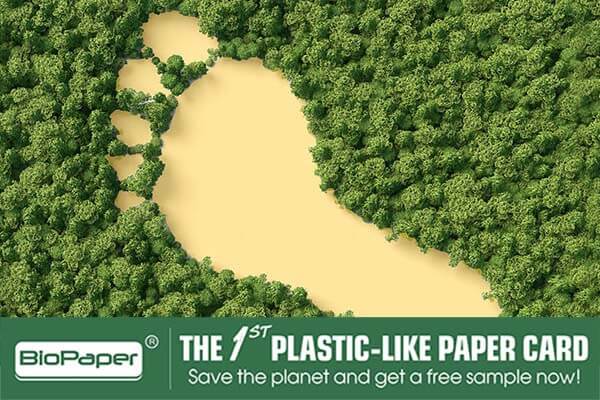BioPaper card is the latest eco-friendly card developed by Nexqo, then what is BioPaper, and what’s the difference between this card and paper card and PVC card? We listed a table as below.
| BioPaper Card | PVC Card | Paper Card | |
|---|---|---|---|
| Raw Material | Calcium Carbonate | Naphtha, Ethylene feedstock, Coal | Wood, rags, grasses |
| Production Process | The most energy saving among all cards | Energy intensive with much waste generated | More energy and waste generated than PVC |
| Performance | Soft and flexible, safe even in low temperature | Tough and stable; fragile in low temperature | Soft, should be away from water |
| Characteristics | Waterproof, Tear-resistant | Waterproof, Tear-resistant | Not waterproof, easy to tear |
| Personalized Printing | Digital, Laser, UV | Thermal Transfer, Digital, Laser, UV | Digital, UV |
| Available Crafts | Not available for Spot UV | Spot UV, Hot Stamp, Metallic Gold/Silver etc. | Hot Stamp, Metallic Gold/Silver, etc. |
| Environmental Impact | Derived from nature, no harm to the environment | Cause white pollution and health crisis | Cause deforestation |
The most advantage of PVC card is, the cost of this material is low and the material is very durable. But it’s harmful to the environment and human health.
The most advantage of paper card is, it’s eco-friendly, but the production of paper material consumes lots of energy, so the carbon footprint of paper cards is much higher than PVC cards.
Take a simple PVC card without any additional technology or crafts for example, the carbon footprint of one PVC card is about 20g of carbon dioxide, while the carbon footprint of a paper card is around 140g of carbon dioxide, which is 6 times higher than a PVC card, that’s really a huge number if we put it in annual capacity.
BioPaper cards consume the least energy during the whole production process, and it’s made from naturally occurring resource, not like PVC or paper, it’s eco-friendly from the source, to the production, and to the end use.
.png)
